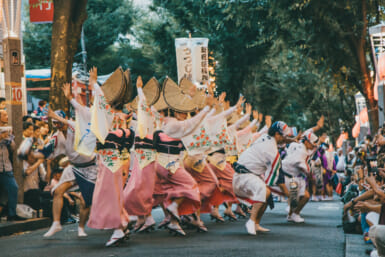by Yurie Horiguchi
Over the years—and even long before I began writing this column for the Weekender (three years already!) —I have been asked scads of questions by both foreigners and Japanese on a variety of subjects.
Some seem to take me for a walking encyclopedia (which I am not), others for a human manifestation of the Yellow Pages (that’s Japan Pearce, not me), and others ask for recipes for Japanese food (turn to Elizabeth Andoh for that) or foreign food (Barbara Adachi or Joan Ito, please).
Just the other day I had a phone call:
“Say, are you a Nisei?”
“No”
“Then how come you speak such good English?”
That set me to wondering where that leaves the British, Australians, New Zealanders, Canadians and non-Nisei Americans, among others.
And that reminds me of a story told about the late Sir Winston Churchill. An American society lady came up to him and gushed, “Oh, Sir Winston, I do so love your English accent!” To which the great man replied. “Madam, I was unaware that we British have an accent—I thought only you Americans had one when speaking our language.”
So to the Q’s and A’s.
Q: Why do the Japanese say moshi-moshi when they answer the phone? What does it mean?
A: A loose translation would be “Say! say!”, implying “By all means speak up.” This probably dates back to the early days of telephone service in Japan. The Connections were so bad that you spent most of your time yelling moshi-moshi nan desu ka?
Why do they say it? Why do Americans, Anglo-Saxons, the French, etc. say “hello” or “hallo” (which traces back to “be whole” or “be healthy”)? Why do Italians say “pronto!” or “ready!”? Why do the Spanish say “Quien es?” or “who is it?”? To each his own, say I.
Q: How do I cross the moat to get to the Imperial Palace?
A: The two answers that come immediately to mind are not recommendable because of possible police intervention: swim or row. So try walking across a bridge. Better still, go to the nearest JTB agency and enquire about their Imperial Palace grounds conducted tours.
Q: How can I learn to tie an obi correctly?
A: a) Go to a kimono school, b) go to your hairdresser, or c) ask an elderly Japanese lady friend. If you are a foreigner, however, forget about it. You would look suite silly dressed up in a traditional kimono. But in case you are a native (or Nisei), a) most young women today, especially if they are living apart from their mothers, have to learn from professionals how to dress themselves correctly. b) Nearly all Japanese-run hairdressers have a tatami room set aside in beauty parlors to help dress customers who are going to a wedding/reception after having their hair done.
Q: Is the cherry blossom the national flower of Japan?
A: No. The chrysanthemum is. A design of a 16-petaled chrysanthemum is the Emperor’s crest. No one else may use it. You will sometimes find on sale dishes or designs with chrysanthemum petals, but if you count them you will find either more or less than 16 petals.
Q: When were Japanese women given the right to vote?
A: In November, 1946.
Q: What is the usual temperature of a ryokan bath? They are usually so hot!
A: Anywhere from 104°F to 110°F.
Q: Why do the Japanese still use the ancient form of dating years (such as Showa 50 for 1975) when they are so westernized in other respects?
A: I wish I knew, but it certainly is an annoying anachronism. The Gregorian calendar was only accepted officially in Japan in the early days of the Meiji reign. Up to then, the Japanese had observed the lunar calendar (as they still do in some rural districts). The first time the Gregorian was used was in 1872 when the 3rd of December of the fifth year of the Meiji Era became January 1st, 1872. But in general the Japanese didn’t like this new system, and ever since then they have illogically kept the old year dating with the new solar dating of the months. Consequently, one has to do mental arithmetic to substitute Meiji, Taisho or Showa years for Gregorian years. You need to know how long each Emperor reigned as the dating starts from the first year of a new Emperor’s reign. Showa 1 was 1925.
Q: Where is the headquarters of the World Judo Federation?
A: Would you believe Brussels, Belgium.
Q: How can you tell a Shinto from a Buddhist shrine?
A: In the first place, only the Shinto have shrines. Buddhists have temples. The Shinto shrine is always recognizable by its torii gateway. In Japanese, the word for shrine is jinja and that for temples is otera.
Q: (From a Japanese lady) I am going to America to join my husband who is working there. I hear that Americans like to entertain at home. I am not a very good cook. What should I serve that is easy to make?
A: Serve Japanese food – especially tempura, suki-yaki, bata-yaki, or any o-nabe (casserole) dish. Most large American cities have outlets for exotic (that is Chinese and Japanese), foods, but if you can’t find what you need, think up a substitute. The principle is that no matter what nationality you are, serve the native dishes that you know best how to prepare, and never fool around with a strange recipe if you are going to serve the meal to guests.
Q: (From an American with PX priviledges) We are going on a trip in Japan with the children. I hear that Japanese milk is heavily watered, being reconstituted from powdered milk. Is that so?
A: Absolutely untrue. Japanese milk comes straight from the cow’s udder. There are several grades of quality, however, so buy the most expensive and you can’t go wrong. The “watered milk” story goes back to the early days of the Allied Occupation when, effectively, there being next to no cow’s milk to be found, the occupation forces gave supplies of powdered milk to the authorities for distribution to families with small children. Some unscrupulous black-marketeers managed to get their hands on important quantities of it, shook it up with water, put it into bottles and sold it to the public. But that was years ago. So don’t worry about it, and feed your children Japanese milk.








